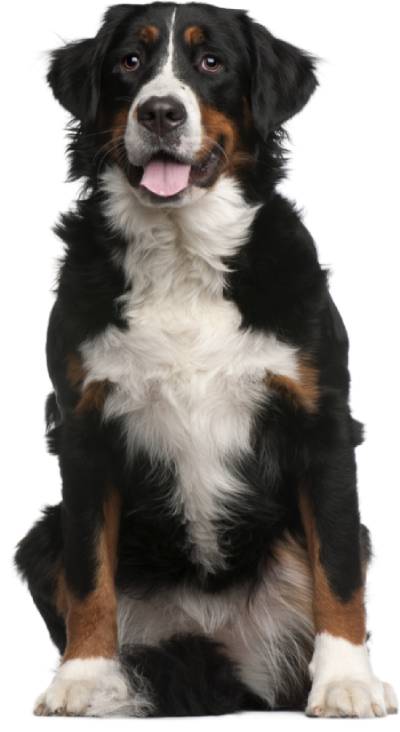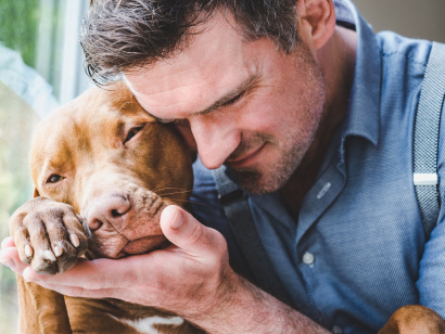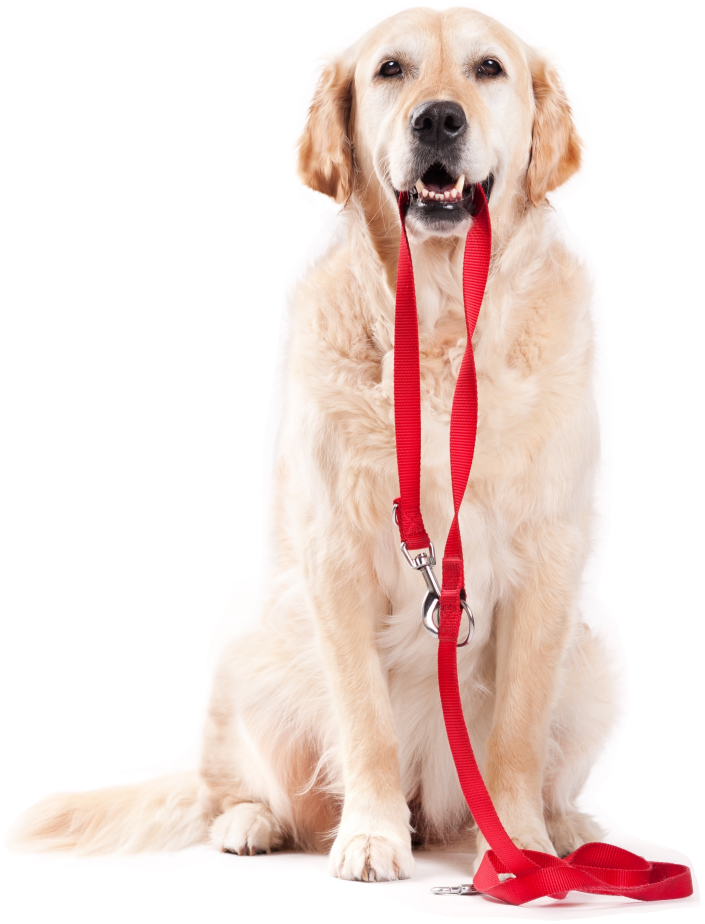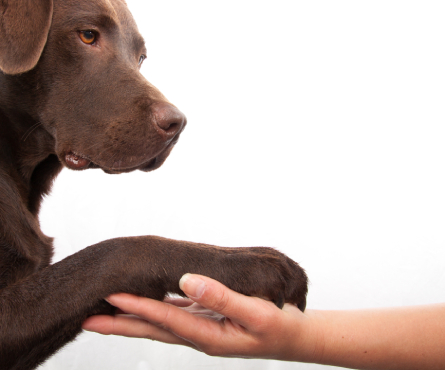Canine elbow dysplasia is a common disorder and has been shown to be more prevalent than hip dysplasia in some breeds. Labrador Retriever, Golden Retriever, Bernese Mountain, German Shepherd, Newfoundland and Rottweiler are breeds that are over-predisposed. The problem is a congenital, hereditary disease affecting young dogs, usually under one year of age. Elbow dysplasia is a complex problem with numerous “sub-set” pathologies but in the most simplistic terms it involves malalignment of the bones of the elbow joint also called joint incongruency. This mal-alignment causes abnormal pressure or joint loading, and chronic rubbing which wears away the cartilage resulting in severe osteoarthritis.
Elbow dysplasia can be broken down into numerous underlying pathologies such as fragmented medial coronoid process, osteochondritis dissecans and medial compartment syndrome just to name a few. Definitive diagnosis is made via CT scanning and arthroscopic examination. Some cases can be treated entirely with arthroscopic procedures.

The primary clinical sign of canine elbow dysplasia is limping or lameness. Head bobbing at a fast walk or slow trot is typical of front limb lameness. The lameness is usually not recognizable at a run. Some dogs with elbow dysplasia are reluctant to go for long walks or play for long periods of time. Dogs with elbow dysplasia also have limited range of motion (ROM) in the elbow joints and have pain on elbow extension and flexion. The limited ROM may cause discomfort and difficulty when lying down in sternal position.
The diagnosis of canine elbow dysplasia is based on physical examination, radiographs (X-rays), computerized tomography (CT Scan) and ultimately arthroscopy. The surgeons at CCOR can make a fairly accurate diagnosis of elbow dysplasia and discuss the next steps based on physical examination and simple X-rays alone. CT scanning is often needed for the ultimate, final treatment plan. Arthroscopy is used both as a diagnostic tool and to treat elbow dysplasia.
The treatment options for canine elbow dysplasia depend on the actual definitive diagnosis. Non-surgical treatments include pain management, physical therapy, nutraceuticals such as glucosamine, and various intra-articular injections. All of these options may be indicated in older dogs, or in conjunction with arthroscopic treatments, but none of the above listed treatments address the underlying problem. A common misconception regarding joint injections (stem cells, PRP, etc.) and oral or injectable nutraceuticals is that they promote cartilage regrowth or repair, and this is simply not true.
Intra-articular injections (joint injections) are commonly performed but with somewhat variable clinical results. Stem cells, platelet rich plasma (PRP), hyaluronic acid (HA) and glucocorticoid steroids are the typical products injected. Recent studies have shown clinical improvement in some dogs with elbow dysplasia treated with PRP. The duration of improvement is currently unknown, but a best guess would be 6 months. Colorado Canine Orthopedics has extensive experience with intra-articular joint injections and we would be happy to discuss the pros and cons of joint injections for individual patients.
Surgical treatment options can be broken down into arthroscopic treatments, osteotomies (bone cuts) to realign the bones, or a combination of both. Virtually all board certified surgeons agree that dogs with elbow dysplasia require a thorough arthroscopic examination both to evaluate pathology and provide treatment. Arthroscopy is typically performed under general anesthesia and involves a small “poke hole” into the joint. The arthroscope (usually 2-3 mm in diameter) is passed through the opening and into the joint. Joint visualization via magnified arthroscopy is incredibly thorough comparted to open joint inspection which is minimal at best. Bone and cartilage fragments and other joint debris can be identified and removed via arthroscopy. Joint surfaces can also be debrided or “cleaned up” using small electric shavers and handheld instruments.
Dogs undergoing arthroscopic elbow surgery have a fair to excellent prognosis depending on the exact diagnosis, degree of incongruency and existing osteoarthritis (OA). Nearly all surgeons agree our best defense against progressive OA is to obtain an accurate diagnosis (CT and arthroscopic examination), remove any free fragments and minimize abnormal joint contact. Overall, the majority of dogs with elbow problems lead a fairly normal life although some degree of OA is inevitable.


Fragmented coronoid process is a subset of elbow dysplasia that affects large and giant breed dogs, particularly Retrievers, Rottweilers, Mastiffs, Bernese Mountain dogs, and German Shepherd dogs. Malalignment and overloading of the medial (innermost aspect of the joint) compartment are believed to be key in this pathology. Loading or abnormal weight bearing on the medial compartment leads to concurrent cartilage erosions (often full thickness) and possible fragmentation of the medial coronoid.
Diagnosis of fragmented coronoid process and medial compartment disease can be challenging. Radiographs are helpful but not definitive. In our opinion, arthroscopy is the ideal modality for the diagnosis of fragmented coronoid process because it allows accurate diagnosis and treatment of the fragment, as well as cartilage assessment. Traditional open surgery to diagnose fragmented coronoid is antiquated. First and foremost, the surgical approach to the elbow joint that affords the surgeon a thorough inspection is invasive and has moderate post-operative morbidity. Secondly, the arthroscopic visualization of key structures is far superior to an invasive surgical approach.
Treatment of fragmented coronoid process in mild cases involves arthroscopic removal of the fragmented bone and cartilage. Arthroscopy is fast, effective, and minimally invasive. Arthroscopic treatment takes between 15 and 30 minutes per elbow and virtually all dogs can be treated on an outpatient basis. In mild cases the prognosis for return to normal activity is excellent. Most dogs return to normal activity within a few weeks to a few months with little or no lameness.
In moderate cases, the coronoid process is both fragmented and abnormal in size and shape, cartilage erosion is present on both the medial humeral condyle and the non-fragmented portion of the remaining medial coronoid. In these situations, the fragment is removed and a partial coronoidectomy is performed arthroscopically. An ulnar osteotomy may also be performed in moderate cases. The prognosis for moderate cases of fragmented coronoid process is less certain. If the aforementioned treatments are performed and the cartilage is in fair condition, many dogs have no or minimal lameness and the progression of arthritis is slow.

In the majority of dogs with chronic severe elbow dysplasia, all of the cartilage on the medial (innermost) aspect of the joint is worn away, resulting in what is now termed medial compartment disease. Unfortunately, this degree of osteoarthritis is difficult to successfully treat. Arthroscopy can be used to remove any free fragments and the joint. Several osteotomies such as proximal dynamic ulnar osteotomy and PAUL procedure can also be used to treat medial compartment syndrome with variable results. Platelet rich plasma has shown some promise for short term improvement but will not promote cartilage regrowth. Elbow replacement is available, and has been performed at CCOR, but the procedure is new and long-term results are not yet available.
Osteochondritis Dissecans (OCD) is a juvenile bone disease that can affect the shoulder, stifle, tarsal and elbow joints of young dogs. Osteochondritis Dissecans is a subset of osteochondrosis.
Osteochondrosis is a failure of endochondral ossification; the process by which most bones grow and involves juvenile cartilage being replaced by bone. This failure of cartilage becoming bone results in overly thick joint cartilage adjacent to the joint (figure 1). The deepest layer of this thickened cartilage is inadequately nourished resulting in cell death (figure 2). Eventually, the deep detachment fissures and propagates to the joint surface and a “flap” develops (figure 3). Cartilage debris and inflammatory mediators are released into the joint fluid and inflammation ensues. With time, arthritis/degenerative joint disease occurs.
Elbow OCD affects young large and giant breed dogs. Limping is the common clinical sign. Many dogs have pain on elbow flexion and extension, as well as limited range of motion. Radiographs are helpful in diagnosing OCD, but CT scanning and arthroscopy are used for definitive diagnosis. Treatment for elbow OCD involves arthroscopic debridement followed by a cartilage grafting procedure called osteochondral autograph transfer system (OATS). Artificial cartilage plugs (Synacart by Arthrex) can also be used to fill the defect. Some forms of biological treatment such as platelet rich plasma or stem cells have also been advocated but will not result in cartilage regeneration despite claims made by some.

Ununited anconeal process (UAP) is an elbow disorder most often affecting young German Shepherds, although it can be seen in almost any breed. The underlying problem is not clearly understood. UAP may be associated with malalignment of the elbow joint or a genetic juvenile bone disorder called osteochondrosis.
The most common clinical signs are limping and swelling of the elbow joint. Clinical signs usually appear at about 6-8 months of age. Radiography, CT scan and arthroscopy are used to make the diagnosis.
Treatment options include arthroscopy, ulnar osteotomy, fragment removal or fragment re-attachment. Treatment should be initiated as soon as the diagnosis is made. The prognosis is fair to good.
Veterinary specialty care is a double-edged sword these days (no pun intended). All major orthopedic procedures are more sophisticated, successful, and less invasive today than they were in the past. These advances come at a cost for the surgeon and client. The average cost of an elbow arthroscopy at Colorado Canine Orthopedics can vary from patient to patient due to factors that may be hard to determine until a physical examination has been completed. Please contact our office to discuss a pre-consultation estimate for your pet. A refined, doctor specified estimate will be presented at the end of your pet’s initial consultation.
Fees for elbow arthroscopy includes anesthesia and monitoring, nerve blocks when needed, and routine go home medication. Radiographs and CT scans are charged for separately and should be discussed at the time of the initial consultation. Osteotomies, when required, are charged for separately and should be discussed on a case by case basis.
At Colorado Canine Orthopedics we are committed to providing only state of the art, non-compromised pet healthcare. We realize some pet owners may find this level of care relatively costly. However, despite the inherently expensive nature of our work, we are dedicated to providing the highest level of care at the most affordable price possible. We believe if you compare our fees to other specialty practices you will find this true.
